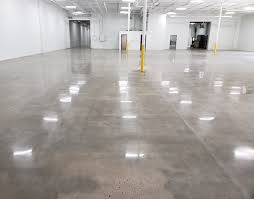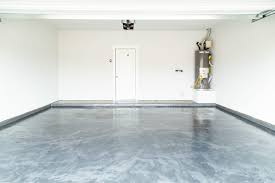Transmission Failure: 7 Signs That your Transmission may be Failing
Your car’s automatic transmission is the behind-the-scenes workhorse of your engine, constantly shifting up and down through your gears to smoothly and silently transfer power to your wheels. When it works correctly, you don’t notice it—and that’s the whole point. However, the longer your transmission is in service, the more susceptible it could be to problems.
Sometimes, the issue is inexpensively fixed, but if left unchecked, you could find yourself in need of a full transmission overhaul, which can be an expensive and technical repair job. It’s worth knowing some early signs of a potential transmission failure, so you can catch developing problems before it’s too late.
7 Early Signs of Potential Transmission Failure
Transmission Warning Light
While the transmission warning light turning on may sound obvious, a surprising number of drivers will ignore their dashboard indicator lights. Some models have a specific transmission warning light, while others will have a general “check engine” light that can signal early transmission failure. In either case, you should take your car to a repair shop to check up on those warning lights as soon as they pop up.
Bumping Noises While in Neutral
You’d think that there wouldn’t be anything to look out for while your transmission is in neutral since your vehicle is not in motion. If you are hearing bumping noises in neutral, this might indicate that the transmission fluid is low or in need of replacement. Follow the instructions in your owner’s manual to test the dipstick under the hood to make sure the level is right and the fluid is still bright red and sweet-smelling (and not dark brown and burnt-smelling).
Noises in neutral could also indicate a mechanical problem, like a worn idler gear or work bearings. If a top off of your transmission fluid–follow the instructions in your owner’s manual–doesn’t resolve the problem, you should visit your mechanic to have them take a look.
Leaking Transmission Fluid
Automatic transmissions are closed systems. Unlike your engine’s motor oil, there is no reason why a transmission should leak or burn up its fluid. If you notice a puddle of bright red or dark brown fluid under the center of the car, that could be a sign of impending transmission failure. You should have a mechanic track down the source of the leak.
Whining Noises
You need to keep your ears open to notice this warning sign. When a transmission is starting to experience distress, it will sometimes start to emit a whining, whirring, humming or even a slight buzzing sound when in use. Often these noises are intermittent at first, but, if you don’t get them checked, they will happen more often over time and increase the risk of serious damage.
Uneven Gear Shifting
This is another warning sign that occurs when you’re out on the road. A properly functioning automatic transmission will shift almost imperceptibly between gears. The sensors are designed to transfer power as smoothly and efficiently as possible. However, if your transmission is having problems, you may start to feel a kind of shimmy or shudder when it attempts to shift from one gear to the next. That sensation can be one of the early signs of transmission failure.
Transmission Hesitation
This warning sign feels less like a stumble or a stutter during shifting, and more like an annoying pause before the next gear engages. If your automatic transmission starts hesitating between gears, it’s going to feel like something is off. You’ll want to have a mechanic examine the system. Not being able to rely on your transmission to give you more power when you need it can be a real safety hazard, especially in highway driving conditions.
Slipping Gears
If a car starts to slip gears, this is a clear and present danger that needs to be examined by a mechanic as soon as possible. When a car spontaneously slips out of one gear while driving, popping down to a lower gear, it’s time to get the car examined pronto.

Here are a few signs of transmission problems to consider:
- If you notice that your car is dripping a red fluid, that is most likely transmission fluid. Check on the ground where your car is normally parked. If you find that you have more than a few small drops, you may need transmission repair in a hurry. If your fluid is low, you can add transmission fluid to your car in order to protect it from damage while you drive it to the auto mechanic.
- When you are driving, the shifting between gears in an automatic transmission car should operate almost silently and imperceptibly. If you are having problems with your transmission, you may notice that there are vibrations or hesitancy when shifting through different gears as you drive. An auto mechanic with complete car care service expertise will be able to advise you about the problem and determine what type of transmission repair can get you back on the road.
- When your transmission doesn’t have enough fluid, you may experience it stalling at red lights or stop signs. Though it should start right back up, taking your car to an auto shop for repair is key as your transmission lines may be leaking and may need to be replaced. Though still not a small repair, getting new transmission lines can make sure that your transmission is getting the fluid it needs to operate and can be less costly than an entirely new transmission or rebuild.
- Fluid color.
Transmission fluid that has come from an overheated transmission isn’t generally red; it will appear dark brown or black as a result of being exposed to high temperatures. If you find that your transmission fluid isn’t maintaining its red color, then it is time to get your car in for repair.

Understanding Automatic Transmissions
The transmission transfers torque from the engine to the wheels to provide optimum power to negotiate various driving conditions. In a manual transmission, this is achieved when the driver selects the right gear depending on driving conditions.
Automatic transmissions select the right gear ratio without any driver intervention. Both manual and automatic transmissions give a fixed number of gear ratios. A CVT, on the other hand, gives a theoretically infinite number of gear ratios within a fixed range.
A manual transmission needs maintenance and it is checked during periodic service. It can also be easily repaired. But, automatics and CVTs are relatively maintenance free, at least according to most manufacturers.

Symptoms Of Transmission Problems
You know you have a transmission problem when your car starts behaving strangely. The gear shift becomes less smooth. Sometimes, the engine revs, but the car does not move forward. These symptoms may not be a problem initially, but they tend to get worse and after some time, become serious causes of concern.
When the symptoms become very acute, it pretty much spells the end of the transmission. Fixing the transmission in time can help prevent such problems and save you the huge cost of a new transmission. The trick is to prevent the transmission from getting to the point of no return.
Servicing An Automatic Transmission
Although saving the transmission is easier in the early stages, there is no harm in attempting a transmission fluid flush even at a later stage. In many cases, changing the transmission fluid can restore the performance of the transmission to a great extent even if the symptoms are acute. There is no guarantee, but it often works and is a good and inexpensive way to fix the issue.
A new transmission costs almost ten times the cost of flushing the transmission fluid. So, it makes sense to attempt the repair. It may not restore the transmission to its full performance, but some symptoms disappear and others become less dramatic. Maintaining the transmission in the early stages is much better than taking this gamble.
Servicing a CVT
Unlike a manual or an automatic gearbox, a CVT can theoretically offer infinite gear ratios within a range. This offers the right power for all types of driving conditions and great fuel economy.
Most manufacturers do not expect any maintenance on a CVT. That’s why, transmission fluid changes are usually absent from manufacturer-specified vehicle service schedules. A fluid change is not recommended as it is a “lifetime” fluid. What they don’t mention is that the life of the transmission is only about 120,000 km without maintenance and replacement is expensive.
Replacement costs are high due to the complex nature of the transmission. A new transmission could set you back by £3,000 to £6,000. A fluid change can significantly extend transmission life. CVT transmission fluid is relatively inexpensive and the entire job should cost only about £200. It is definitely the better option.




























